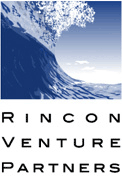
You may not realize it, but your adVenture’s Core Team is akin to a primitive tribe. The Core Team is of the three to five key individuals upon which your company’s leadership and direction is derived.
Thus, understanding the tribal organizational structure is vital to gaining an appreciation of the various roles played by your Core Team. The tribal structure works, as evidenced by its survival over eons, ultimately leading to Man’s position at the top of the food chain.
If you haven't already subscribed yet, subscribe now for
free weekly Infochachkie articles!
Primitive tribes and your startup both entail a small number of people banded together to battle an uncaring, hostile world. Like the Tribe, your company’s survival is always in question and never guaranteed. Success depends upon everyone pulling together for the common good and striving to accomplish common goals. Everything must be focused on survival before the Tribe can prosper and eventually evolve into a thriving, self-sustaining community.
The laws of tribal order call for division of labor. Your startup is no different. Before the world was polluted with such esoteric labeling tools as Meyers Briggs analyses, people in tribal communities migrated to those roles which best suited their personalities, proclivities and skills. The key roles of any Tribe, as well as any startup, include: the Hunter, the Skinner, the Chief and the Shaman.
Hunter
The Hunter defends the Tribe and literally ‘brings home the bacon’. These individuals are highly autonomous, independent and thrive on frequent recognition. When their efforts feed the Tribe, they want everyone to know that it was their efforts.
The Hunter is generally not a visionary. However, once they are pointed in the right direction, they are clever enough to improvise on a tactical level and get the job done. They do not want to be told how to take the hill, just which hill needs to be taken.
At your adVenture, the hunter is the Rainmaker (see ‘Beware the Consultant’). They might appear in the form of a Business Development Executive, Key Accounts Salesperson or a deal-making Corporate Development Officer. Once they are told the type of deal that is needed, they are capable of devising the proper tactics to get the deal done with very little guidance.
Additional characteristics of the Hunter include:
- Work hard
- Driven to do right thing
- Fast and Furious
- Under communicate
- – Do not like to confer with or answer to the group
- Excel under pressure
- Quantity over quality
- – “Close enough” is OK
Skinner
The Skinner makes the Hunter look good. When the Hunter brings back the kill, it is the Skinner who dresses the meat, tans the hides and cures whatever is not initially eaten for the Tribe to subsist upon during the lean times of winter.
The Skinner at your adVenture will likely take the form of the Director of Operations, VP of Professional Services or Chief Operating Officer. They ensure that your company delivers on the promises made by your marketing and sales Hunters. They also make certain that the deals closed by the Rainmakers are successful by satisfying the partners / customers needs.
The characteristics of a typical Skinner include:
- Work correctly
- Driven to do things the right way
- Slow and careful
- Service oriented
- – Want to meet the needs of stakeholders within the organization
- Over communicate
- – Encourage meetings and agreement regarding goals
- Quality over quantity
- – Do things ‘by the book’
- Work well inside the box
Chief
Every tribe needs a Chief, just like every adVenture needs a CEO. The Chief defines and communicates the Tribe’s strategic direction, such as a new valley to forage or a mountain retreat to escape the dog days of summer. The Chief listens to the opinions of the other tribal members, makes decisions that impact everyone and ensures an adequate level of acceptance of such decisions to facilitate their ultimate success.
One of the best CEO’s I worked with exhibited nearly all of the characteristics noted below. It was frustrating at times, as he was slow to react to certain situations and, in his effort to keep harmony within the Core Team, he would tend to ‘agree’ with everyone.
His ability to sincerely listen and empathize with everyone’s respective positions, especially on difficult issues, was imperative in keeping the Core Team together during the inevitable bumps that we encountered on our road to our successful exit. In addition, time and again, his hesitancy to make a snap decision proved to be prudent.
The characteristics of a typical Chief include:
- Work together
- Shepherds for the other members of your adVenture
- Slow and connected
- Communicate clearly and supportively
- Driven to maintain cohesion within the team
- Indecisive
- Prone to being railroaded
Shaman
Shamans invent new tools and processes that improve the overall quality of life within the Tribe. For instance, a Shaman will spend his days thinking of a better fishhook, a new tool for cleaning skins or searching for new medicinal plants to cure the Tribe’s ailments.
At your adVenture, the Shaman is often the Founder. He may also take the form of Chief Technical Officer, VP of Engineering or Chief Scientist. By whatever name, the Shaman is a person who creates and develops the ideas upon which your business is based.
The characteristics of a typical Shaman include:
- Work differently
- Creative visionary
- Communicate differently
- – Requires careful listening
- Seek a better way
- Create quickly and freely
- Tripped up by details
- Overly analyze problems and devise complicated solutions
Tribal Elders
The Tribal Elders spend most their time sitting by the fire dozing off. They cannot be counted on to do any ‘heavy lifting’ nor are they in a position to execute the day-to-day tasks necessary for the Tribe to thrive. However, they occasionally offer bits of sage advice that allow the Tribe to avoid hardships and reap windfalls. As such, the wise Chief knows when to solicit their counsel and when to allow sleeping Elders to lie.
At your adVenture, the Tribal Elders are represented by your Board of Directors and Advisory Board Members. The Board Members likely have a varied and broad business history upon which to draw upon. They may be able to provide general guidance at certain pivotal points during your adVenture’s journey. However, as noted in the “Brian Epstein is Not John Lennon” entry, be careful to not heed their advice blindly, as it is impossible for them to have your level of insight into the operational details of your adVenture.
Pop Quiz: Which Tribal member is the most important?
Answer: All of them.
Without the Hunter, the Shaman’s ideas would never put into practice. Likewise, without the Skinner, much of the Hunter’s efforts would be wasted. He might be able to feed himself, but he would not be able to sustain the Tribe on his own.
Without the Shaman, neither the Hunter nor the Skinner would have the tools necessary to carry out their respective roles within the Tribe. Without the Chief, the Tribe would wander aimlessly, fighting among itself until the group eventually dispersed and the individual members were melded with other Tribes with healthier cultures and a more focused sense of direction.
As noted in, “Be The Beatles Not the Flock Of Seagulls”, balance is the key to a successful team. Thus, every member of your adVenture’s Core Team is the ‘most important’ member. The selection and cultivation of your Core Team is probably the most important aspect of your startup, followed closely by the idea upon which your adVenture is based. Respect man’s evolution and heed the tribal lessons of old. If you do, you may just end up on top of the food chain in your industry.
Personal Assessment Exercise
In order to locate the appropriate members for your Tribe, you must first gain a solid understanding of your strengths, weaknesses and passions. Once you identify which Tribal position you are best suited to fulfill, you will be well positioned to bring together the remaining members of the Tribe. Once you ‘know what you do not know’ you are well on your way to building a highly complimentary Tribe.
To this ends write an introspective analysis of your personality, experiences, desires, strengths, weaknesses and other aspects that will influence whether or not you will be a successful entrepreneur. This analysis should include a description of the type of Tribal members you will need to bring together in order to launch a successful venture, as well as the customer target markets, technologies, industries etc. that are the most appropriate fit for your skills and proclivities. The specific skills to be embodied by the other members of your Tribe should be articulated. Such skills are likely to be in those areas in which you are deficient, inexperienced and/or uninterested in pursuing.
This analysis should also include a description of your ‘risk profile’, (i.e., from “I am ready to mortgage my house today” to “I am most comfortable working at a Fortune 500 company”).
Ask a trusted friend or colleague to give you feedback on your Personal Assessment, based on the extent to which you: (i) demonstrate a deep, realistic self-awareness, and (ii) the degree to which you are able to utilize your self-awareness to articulate the ‘ideal’ entrepreneurial / non-entrepreneurial work environment, necessary characteristics of the other Tribal members, types of market opportunities, etc. that will maximize your chances of success.
— Get hands-on advice from your John Greathouse, Subscribe Today. —
Copyright © 2007-9 by J. Meredith Publishing. All rights reserved.




Pingback: Inventors vs. Innovators | infoChachkie
Pingback: Starting Up In A Downturn | infoChachkie
Pingback: MaRS Blog - Innovation and Commercialization in Canada » Blog Archive » Building teams: Tribes rule!
Pingback: Derisk Your Startup By Doing It Again | infoChachkie
Pingback: Building a Successful Startup Team | infoChachkie
Pingback: Know When To Declare Defeat And Toss Out A Bad Idea | infoChachkie
Pingback: Quora
Pingback: Interview: Ian Siegel of ZipRecruiter | infoChachkie
Pingback: Quora
Pingback: Be The Beatles Not The Flock Of Seagulls
Pingback: Effective Startup 360-Performance Reviews
Pingback: Startup 360-Performance Review Result – Improved Time Management
Pingback: Why You Should Hire A Gaggle Of Interns At Your Startup